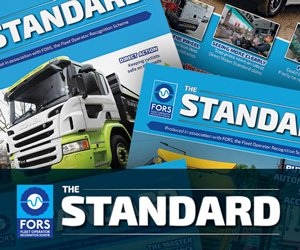
Van traffic grew more quickly than any other vehicle type, rising 4.7% from 2015 to 49.1 billion vehicle miles in 2016. Overall, 323.7bn miles were driven on Great Britain’s roads, a 2.2% increase from the previous year, according to figures released by the Department for Transport (DfT).
Car traffic grew by 2% from 2015 to 252.6bn vehicle miles – the highest annual car traffic estimate ever – and lorry traffic showed little change, having grown steadily for the previous three years.
RAC roads policy spokesman Nick Lyes said: “These figures underline the importance of having a road network that is truly fit for purpose – and a reminder to the Government that investment must be sustained to support further economic growth and to provide roads that deliver safe, reliable journeys for every UK motorist.”
Since the 1980s, cars have accounted for around four-fifths of all motor vehicle traffic and continue to be the main contributor to traffic changes.
However, vans have grown in importance, accounting for 15% of all motor vehicle traffic in 2016.
In fact, there has been a 71% increase in van miles since 1996, while the number of licensed vans has risen by 74% over the same period.
Over the past 20 years, trends in van traffic have followed changes in the economy closely. As businesses were established or expanded, the van fleet grew at the same rate.
But, when gross domestic product (GDP) resumed growth after the recent recession, van traffic grew even faster than GDP between 2012 and 2016.
This additional growth can be linked to a shift in the way consumers and businesses operate, including a growth in internet shopping and home deliveries.
Around £133bn was spent online with UK retailers in 2016, £18bn or 16% higher than in the previous year, according to IMRG and Capgemini.
The DfT also suggests that fewer regulations on driver training, driver’s hours and road-worthiness testing for vans compared to trucks make it easier to find drivers for vans. This may encourage businesses to substitute vans for small lorries, it says.
In 2016, lorries travelled 16.6bn vehicle miles. Overall, lorry traffic remained broadly stable between 2015 and 2016 (-0.2% fall), after having risen by more than 7% between 2012 and 2015.
However, the stable overall figure comprised a small rise in lorry traffic on motorways and rural ‘A’ roads, alongside decreases on other road types.
This continues a general trend of higher growth rates on motorways and rural ‘A’ roads seen over the past 20 years.
The 2016 figure of 7.7bn vehicle miles on motorways equals the previous high seen in 2007 and, together, motorways and rural ‘A’ roads carry 82% of lorry traffic.




